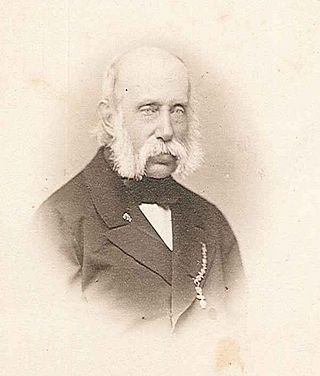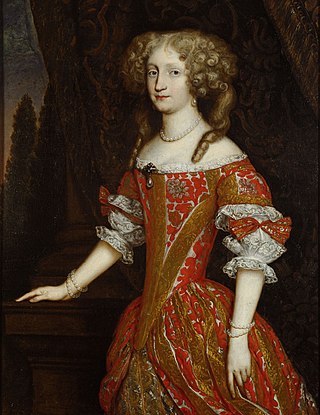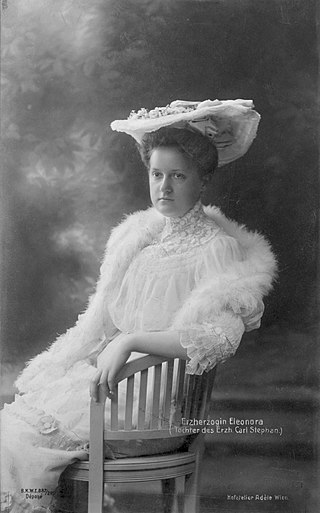

The Ducal Crypt (German : Herzogsgruft) is a burial chamber beneath the chancel of Stephansdom in Vienna, Austria. It holds 78 containers with the bodies, hearts, or viscera of 72 members of the House of Habsburg.


The Ducal Crypt (German : Herzogsgruft) is a burial chamber beneath the chancel of Stephansdom in Vienna, Austria. It holds 78 containers with the bodies, hearts, or viscera of 72 members of the House of Habsburg.
Before his death at age 25 in 1365, Duke Rudolf IV 3 had ordered a crypt to be built for his remains in the new cathedral he commissioned, and it has sheltered those remains for over 650 years. He also ordered a cenotaph for himself to be placed upstairs above the crypt, in front of the high altar. That symbolic tomb was later moved to the north choir and his epitaph written in secret symbols was placed on the wall of that choir.
The family of the ruling line of Austrian dukes was buried here after Rudolf IV, but after the dynasty became emperors they were buried in various cities (Vienna was not yet the settled seat of the emperor). After the Imperial Crypt at the Kapuzinerkirche opened in 1633, it became the new dynastic burial place.

Embalmers have known since the time of the Ancient Egyptians that it is necessary to remove the internal organs if the rest of the body is to be preserved. The containers with those organs were usually put in the coffin, but when the heir to the Imperial Throne, King Ferdinand IV of the Romans, died in 1654, he specified in his will that the container with his heart be placed in the Augustinerkirche, his body in the Imperial Crypt in the Kapuzinerkirche, and the urn with his viscera in the crypt at the Stephansdom. His instructions resulted in the foundation of the Herzgruft at the Augustinerkirche. His younger brother, Emperor Leopold I, pursued a tradition imitating that distribution of remains, and also enlarged the Imperial Crypt to make it large enough for additional future burials. The urns with viscera were thereafter regularly deposited in the Ducal Crypt in the Stephansdom. There are now 33 persons who are each buried in all three places.
By 1754, the small rectangular Ducal Crypt was overcrowded with 12 sarcophagi and 39 urns, so the area was expanded with an oval chamber being added (directly beneath the present location of the Archbishop's Throne) beyond the east end of the rectangular one. New sarcophagi were made for some of the bodies.
In 1956 the crypt was renovated and the contents were rearranged. The sarcophagi of Duke Rudolf IV 3 and his wife 4 were placed upon a pedestal and the 62 urns containing organs were moved from the two rows of shelves around the new section to cabinets in the original chamber.
Deposition in the crypt has not always been permanent. Emperor Frederick III lay here for only 20 years after his death, until his magnificent tomb upstairs in the south choir was ready. The body of his brother, Archduke Albert VI, was removed after 300 years.

The greatest influx, other that the regular arrival of visceral urns, came as a result of the Austrian version of the Dissolution of the English Monasteries under Emperor Joseph II in 1782. When the religious institutions holding bodies of some of the members of the dynasty were closed, they needed to be moved. The Imperial Crypt at that time had only half the space it has today, and already held 57 bodies. The emperor ordered that the bodies of two persons 1 14 who had died before the Imperial Crypt opened be brought to the Ducal Crypt instead. Another person, Empress Eleanor, 16 would normally have been entitled to space in the Imperial Crypt, but because her husband 19 was not buried there either, her body was sent to the Ducal Crypt.
It is probably around this time that the body of Duke Albert VI was removed to make room for others, and that the body 15 whose sarcophagus is inscribed with only the year and name of the parents arrived. Identified through other evidence as one-year-old Anna of Lorraine, it is known that her brother Charles V, Duke of Lorraine married Archduchess Eleanora Maria Josepha (1653–1697) (widowed Queen of Poland and daughter of Emperor Ferdinand III) 21 in 1678, and that marriage may have some connection with this non-Habsburg being brought here, but the exact reason is unclear.
The last item interred here is the urn with the viscera of Archduke Franz Karl 78 , father of Emperor Franz Joseph, in 1878.


The Ducal Crypt shelters the bodies of:
Gated niches in the original chamber (outside the entrance to the previous chamber) protect 62 copper urns containing the viscera (intestines) of various members of the Habsburg dynasty.






Sophie, Duchess of Hohenberg was the wife of Archduke Franz Ferdinand of Austria, the heir to the Austro-Hungarian throne. Their assassination in Sarajevo sparked a series of events that led, four weeks later, to World War I.

Archduke Franz Karl Joseph of Austria was a member of the House of Habsburg-Lorraine. He was the father of two emperors: Franz Joseph I of Austria and Maximilian I of Mexico. Through his third son Karl Ludwig, he was the grandfather of Archduke Franz Ferdinand of Austria – whose assassination sparked the hostilities that led to the outbreak of World War I – and the great-grandfather of the last Habsburg emperor Karl I.

The Imperial Crypt, also called the Capuchin Crypt (Kapuzinergruft), is a burial chamber beneath the Capuchin Church and monastery in Vienna, Austria. It was founded in 1618 and dedicated in 1632, and located on the Neuer Markt square of the Innere Stadt, near the Hofburg Palace. Since 1633, the Imperial Crypt serves as the principal place of entombment for the members of the House of Habsburg. The bones of 145 Habsburg royalty, plus urns containing the hearts or cremated remains of four others, are here, including 12 emperors and 18 empresses. The visible 107 metal sarcophagi and five heart urns range in style from puritan plain to exuberant rococo. Some of the dozen resident Capuchin friars continue their customary role as the guardians and caretakers of the crypt, along with their other pastoral work in Vienna. The most recent entombment was in 2023.

Archduke Ferdinand Karl of Austria-Este was a son of Holy Roman Emperor Franz I and Maria Theresa of Austria. He was the founder of the House of Austria-Este and Governor of the Duchy of Milan between 1765 and 1796. He was also designated as the heir to the Duchy of Modena and Reggio, but he never reigned, owing to the Napoleonic Wars.

Maria Christina, Duchess of Teschen, was the fifth child of Maria Theresa of Austria and Francis I, Holy Roman Emperor. Married in 1766 to Prince Albert of Saxony, the couple received the Duchy of Teschen, and she was appointed Governor of the Austrian Netherlands jointly with her husband during 1781–1789 and 1791–1792. After two expulsions from the Netherlands, she lived with her husband in Vienna until her death.

Prince Albert Casimir of Saxony, Duke of Teschen was a Saxon prince from the House of Wettin who married into the Habsburg imperial family. He was noted as an art collector and founded the Albertina in Vienna, one of the largest and finest collections of old master prints and drawings in the world.

The Herzgruft is a burial chamber that protects 54 urns containing the hearts of members of the House of Habsburg. The crypt is located behind the Loreto Chapel in the Augustinian Church within the Hofburg Palace complex in Vienna, Austria.

The Augustinian Church in Vienna is a parish church located on Josefsplatz, next to the Hofburg, the winter palace of the Habsburg dynasty in Vienna. Originally built in the 14th century as the parish church of the imperial court of the Habsburgs, the harmonious Gothic interior was added in the 18th century. The official name of church and parish is St. Augustin, but it is locally called Augustinerkirche.

Infanta Maria Luisa of Spain was Holy Roman Empress, German Queen, Queen of Hungary and Bohemia, and Grand Duchess of Tuscany as the spouse of Leopold II, Holy Roman Emperor.

Archduchess Maria Clementina Franziska Josepha of Austria was Princess of Salerno by marriage to the Sicilian prince Leopold, Prince of Salerno. She was born an archduchess of Austria as the daughter of Francis II, Holy Roman Emperor, and Maria Theresa of Naples and Sicily.

Eleonore Magdalene Therese of Neuburg was Holy Roman Empress, German Queen, Archduchess of Austria, Queen of Hungary and Bohemia as the third and final wife of Leopold I, Holy Roman Emperor. Before her marriage and during her widowhood, she led an ascetic and monastic life, translating the Bible from Latin to German and defended the Order of the Discalced Carmelites. Reputed to be one of the most educated and virtuous women of her time, Eleonore took part in the political affairs during the reign of her husband and sons, especially regarding court revenue and foreign relationships. She served as regent for a few months in 1711, period in which she signed the Treaty of Szatmár, which recognized the rights of her descendants to the Hungarian throne.

Maria Theresa of Naples and Sicily was the first Empress of Austria and last Holy Roman Empress as the spouse of Francis II. She was born a Princess of Naples as the eldest daughter of King Ferdinand I of the Two Sicilies and Queen Maria Carolina.

Claudia Felicitas of Austria was by birth an Archduchess of Austria and by marriage Holy Roman Empress, German Queen, Archduchess consort of Austria, Queen consort of Hungary and Bohemia as the second wife of Leopold I.

Maria Leopoldine of Austria-Tyrol, was by birth Archduchess of Austria and member of the Tyrolese branch of the House of Habsburg and by marriage the second spouse of her first cousin, Ferdinand III, Holy Roman Emperor. As such, she was Empress of the Holy Roman Empire, German Queen and Queen consort of Hungary and Bohemia. She died in childbirth.

Marie Anne of Austria was an Archduchess of Austria as the daughter of Franz II, Holy Roman Emperor and his second wife, Maria Theresa of Naples and Sicily. She never married or had any children due to her being intellectually disabled with a severe facial deformity and having to spend the rest of her life in Hetzendorf Palace.

Luisa of Naples and Sicily was Grand Duchess of Tuscany as the wife of Ferdinand III, Grand Duke of Tuscany. She was born a princess of Naples and Sicily as a daughter born to Ferdinand I of the Two Sicilies and Maria Carolina of Austria.

Archduchess Mathilde Marie Adelgunde Alexandra of Austria was a member of the House of Habsburg-Lorraine as the daughter of Archduke Albert, Duke of Teschen. She was intended to become the Queen of Italy as the wife of King Umberto I, but her early death prevented the marriage.

Princess Maria Immaculata of Bourbon-Two Sicilies was fifth child and second-eldest daughter of Ferdinand II of the Two Sicilies and his wife Maria Theresa of Austria. Through her marriage to Archduke Karl Salvator of Austria, Maria Immaculata became an Austrian archduchess.

Archduke Joseph Franz Leopold of Austria was the second son and seventh child of Francis II, the last Holy Roman Emperor and his second wife, Maria Theresa of Naples and Sicily, daughter of Ferdinand I of the Two Sicilies and his wife Maria Carolina of Austria. He was their fourth child to die.

Archduchess Eleonora of Austria was a daughter of Archduke Charles Stephen of Austria and a first cousin of King Alphonso XIII of Spain. She was member of the Teschen branch of the House of Habsburg-Lorraine and an Archduchess of Austria and Princess of Bohemia, Hungary, and Tuscany by birth. She renounced to her titles upon her morganatic marriage to Alfons Kloss, the captain of her father's yacht. During World War II her sons served in the German army.